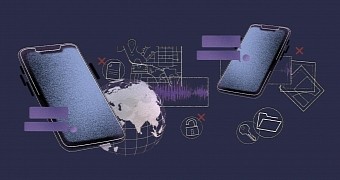A shocking investigation has found that sophisticated malware has been developed to track persons of interest, journalists, and criminals, says New York Post.
First off, take note that there is no evidence yet that the spyware has infected any phones in the United States, while a small number of Americans abroad have been found with the malware. Then again, at least 23 phones were found to have been hacked using Pegasus software from Israel's NSO Group, a technology company.
The study shows that the spyware can monitor everything on a phone, even using the camera or microphone. The malware may not even need to be clicked to successfully compromise a phone. Timothy Summers, IT director at Arizona State University, a former cybersecurity engineer at the U.S. Secret Service, claimed that it is possible to use it to eavesdrop on almost the entire world population.
A relatively small percentage of hacking attacks and attempted attacks are likely to have actually occurred. Only 37 of 67 phones that volunteered to be investigated were found to be hacked or had an attempted hack. However, this does not mean that the other 30 phones were monitored.
Apple iPhone has been shown to be vulnerable to Pegasus spyware
Apple is embroiled in a heated dispute over whether it has done enough to safeguard the security of its devices. This controversy has been sparked by the revelation on a list of phone numbers for 37 cellphones that were discovered to have either been hacked or Pegasus-infected. Of the 37 cell phones on hand, 34 were iPhones.
After news organizations obtained a list of more than 50,000 phone numbers from Pegasus as part of their investigation, reporters recognized the numbers and asked for voluntary access to the phones. The list identified more than 1,000 people in more than 50 countries, including 189 journalists for organizations such as Bloomberg, The Wall Street Journal, CNN, and The New York Times. In addition, it also included 600 government employees and lawmakers.
The list does not include names related to the number or who is on it, which was obtained from Forbidden Stories and Amnesty International. Although the origin of the list remains unclear, the company claims it includes agencies in 40 different countries, according to Washington Post. More than half of the numbers on the list were or are allegedly NSO customers, according to the investigation.

 14 DAY TRIAL //
14 DAY TRIAL //